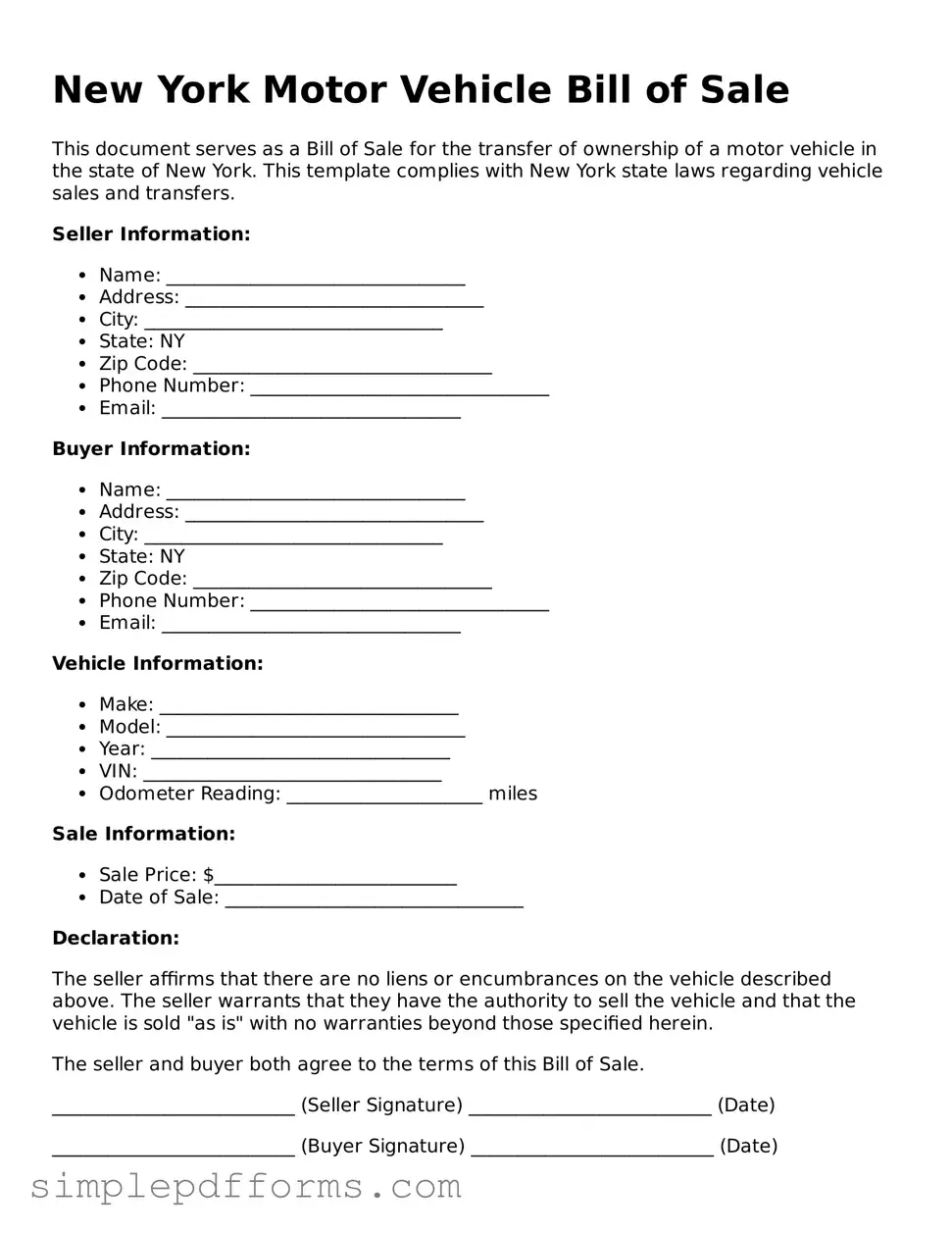Filling out the New York Motor Vehicle Bill of Sale form can be straightforward, but mistakes are common. One frequent error occurs when individuals fail to include all required information. Essential details such as the vehicle identification number (VIN), make, model, year, and odometer reading must be accurately recorded. Omitting any of these can lead to complications later on.
Another mistake is not having the document signed by both the buyer and the seller. Both parties must provide their signatures to validate the transaction. If one party neglects to sign, the form may be considered incomplete, which can create issues with registration or future ownership claims.
People often overlook the importance of providing accurate contact information. Including the correct names and addresses of both parties is crucial. If discrepancies arise, it may be challenging to resolve issues related to the sale. Additionally, using outdated or incorrect information can lead to misunderstandings.
Not including the sale price is another common oversight. The form requires a clear statement of the purchase amount. Leaving this blank can raise questions about the legitimacy of the sale and may complicate tax obligations for both parties.
Some individuals mistakenly use a generic or incorrect form. It is essential to ensure that the specific New York Motor Vehicle Bill of Sale form is being used. Each state may have its own requirements, and using the wrong document can lead to delays or rejections.
Another error involves failing to provide a clear description of the vehicle. A vague description can create confusion. It is important to include specific details such as color, condition, and any distinguishing features to avoid disputes later on.
People sometimes forget to keep a copy of the completed form. Retaining a copy for personal records is advisable. This can serve as proof of the transaction and can be helpful in case any issues arise in the future.
In some cases, individuals neglect to check for errors before submitting the form. Typos or inaccuracies can lead to significant complications. Taking the time to review the form thoroughly can prevent these issues.
Finally, individuals may not be aware of the importance of having the bill of sale notarized. While it is not always required, having a notary public witness the signatures can add an extra layer of security to the transaction. This can be particularly useful in disputes regarding the sale.
